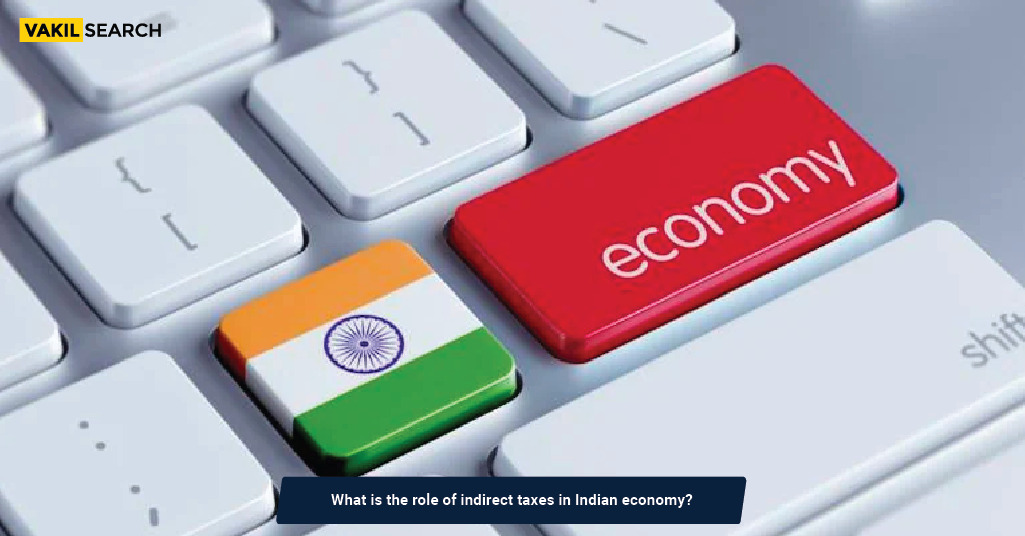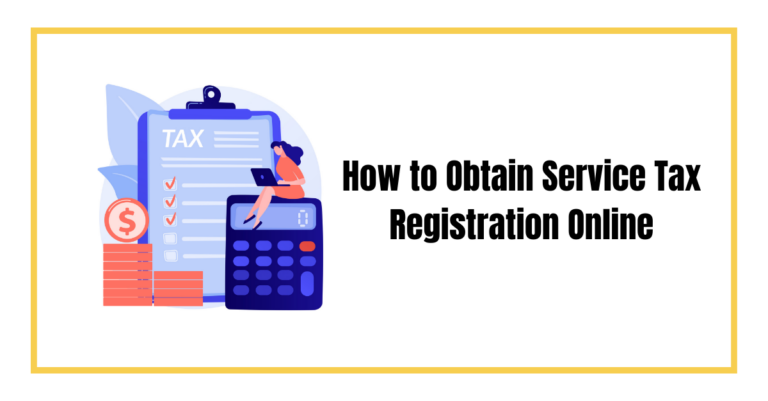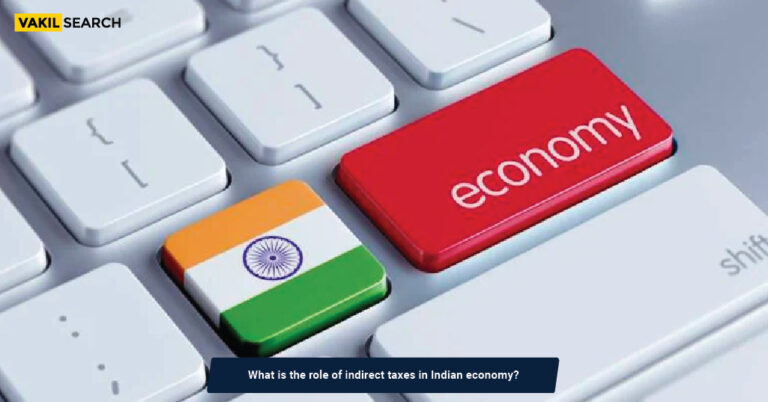Learn about the challenges and criticisms of India's current indirect tax system, including compliance and administrative burden, impact on vulnerable sections of society, and fragmentation.
Indirect taxes are a significant component of India’s fiscal system. These taxes are levied on goods and services produced or consumed within the country. The government collects indirect taxes from businesses or intermediaries. It is ultimately passed on to consumers through increased prices. Indirect taxes in India play a crucial role and this article aims to explore their role in detail.
Role of Indirect Taxes in Fiscal Policy
Indirect taxes are a critical component of fiscal policy, playing a pivotal role in economic management. They primarily serve two major purposes: demand management and stabilisation, as well as the promotion of specific industries and sectors.
Demand Management and Stabilisation
One of the central roles of indirect taxes in fiscal policy is demand management and economic stabilisation. Governments use indirect taxes, such as excise duties and value-added tax (VAT), to influence consumer behaviour and regulate overall demand in the economy.
Counteracting Inflation: Indirect taxes can be employed to control inflationary pressures by increasing the cost of certain goods and services. When the economy experiences high inflation, governments may raise taxes on non-essential items, discouraging their consumption. This reduces demand for these products, helping stabilise prices.
Boosting Consumption: Conversely, during economic downturns or recessions, governments may lower indirect taxes to encourage consumer spending. Reduced taxes on essential goods can stimulate demand, thereby boosting economic activity and helping to counteract a recession’s negative effects.
Fiscal Stimulus: In exceptional circumstances, such as the COVID-19 pandemic, governments may use indirect tax cuts as part of fiscal stimulus packages. Lowering taxes on specific items or sectors can provide immediate relief to individuals and businesses, promoting economic recovery.
Promotion of Specific Industries and Sectors
Indirect taxes can also be strategically used to promote particular industries or sectors within the economy. Governments often employ this approach to achieve various policy objectives.
Supporting Domestic Production: To protect domestic industries, governments may impose higher indirect taxes on imported goods. This makes imported products more expensive, encouraging consumers to choose locally produced alternatives. This approach supports domestic manufacturers and preserves jobs within the country.
Encouraging Sustainable Practices: Indirect taxes can be used to incentivise environmentally friendly practices. For example, lower taxes on energy-efficient appliances or renewable energy sources can promote sustainability and reduce the carbon footprint.
Social Policy Objectives: Indirect taxes can be harnessed to advance social policy goals. For instance, governments may levy higher taxes on products that are considered harmful to public health, such as tobacco or sugary beverages. This not only generates revenue but also discourages consumption, leading to better public health outcomes.
Indirect Taxes and Tax Reforms in India
India has undergone significant tax reforms, with the introduction of the Goods and Services Tax (GST) being a landmark development in the country’s fiscal policy landscape.
Introduction of Goods and Services Tax (GST)
The GST, implemented in India on July 1, 2017, marked a revolutionary change in the nation’s indirect tax structure. It replaced a complex system of multiple indirect taxes, such as excise duties, service tax, and state-level VAT, with a unified, nationwide GST.
Simplification and Harmonisation: GST simplified tax compliance for businesses by replacing a web of state and central taxes with a single tax structure. This move reduced administrative burdens, streamlined tax collection, and enhanced overall ease of doing business.
Uniform Tax Rates: GST introduced uniform tax rates across the country for most goods and services. This uniformity eliminated tax cascading and price distortions, fostering a more competitive market environment.
Digital Transformation: The GST implementation also catalysed India’s digital transformation in taxation. Businesses had to adapt to electronic tax filing and reporting, contributing to increased transparency and efficiency.
Simplification and Rationalisation
Apart from GST, India has undertaken measures to simplify and rationalise its indirect tax system. These reforms aimed to make tax compliance more straightforward and reduce the compliance burden on businesses.
Threshold Exemptions: Many countries, including India, have introduced threshold exemptions for small businesses under GST. Businesses with turnover below a specified limit are exempt from GST compliance, reducing the compliance burden on micro and small enterprises.
E-invoicing: The adoption of e-invoicing for businesses above a certain turnover threshold has further digitised and streamlined the tax reporting process. E-invoicing reduces errors and tax evasion, ensuring more accurate revenue collection.
Digital Payments: The promotion of digital payments, especially for tax transactions, has been a priority. Digital payment gateways and interfaces have made it easier for taxpayers to fulfil their tax obligations.
Future Outlook and Challenges
As India moves forward, several key challenges and future considerations surround the role of indirect taxes in fiscal policy.
Revenue Generation: Balancing the need for revenue generation with taxpayer-friendly policies will be an ongoing challenge. Striking the right balance is crucial to fund government programs while not overburdening businesses and consumers.
Digitalisation: The continued digitalisation of tax processes and compliance will require robust infrastructure and cybersecurity measures to protect sensitive taxpayer data.
GST Rate Rationalisation: Regular reviews and adjustments of GST rates to align with economic conditions and policy goals will be essential. Striking the right balance between revenue generation and economic growth will remain a priority.
Evolving Sectors: As new sectors and industries emerge, tax policies will need to adapt to address their specific needs and encourage their growth. Policymakers must remain flexible and responsive to changes in the economic landscape.
International Trade: India’s indirect tax policies will continue to intersect with international trade agreements and regulations. Harmonising domestic tax policies with global trade standards will be crucial to facilitate cross-border trade.
Compliance and Enforcement: Ensuring tax compliance and preventing tax evasion will remain a significant challenge. Effective enforcement mechanisms, such as data analytics and audits, will be essential to maintain tax discipline.
Sustainability Goals: Indirect taxes can play a role in supporting sustainability objectives. India may explore the possibility of using tax incentives and penalties to promote environmentally responsible practices and reduce carbon emissions.
Socio Economic Impact: Assessing the socioeconomic impact of indirect taxes will be vital. Policymakers must consider the effects of taxation on different income groups and industries to ensure fairness and equity.
In conclusion, the role of indirect taxes in fiscal policy is multifaceted, encompassing demand management, sectoral promotion, and revenue generation. India’s transition to the GST regime marked a significant step towards simplification and rationalisation. However, the future will bring new challenges and opportunities, requiring policymakers to adapt and innovate in response to evolving economic dynamics and societal needs. Balancing the demands of revenue generation with taxpayer-friendly policies and aligning tax policies with sustainability goals will be pivotal in shaping India’s fiscal landscape.
Definition of Indirect Taxes in India
| Type of Indirect Tax | Description | Examples |
| Excise Duty | Tax on goods produced within the country | Cigarettes, Alcoholic beverages, Petroleum products |
| Customs Duty | Tax on goods imported into the country | Electronics, Machinery, Vehicles |
| Service Tax | Tax on services provided within the country | Banking, Insurance, Telecommunication services |
| Value-Added Tax (VAT) | Tax on goods and services at each stage of production or distribution | – |
| Goods and Services Tax (GST) | Comprehensive tax replacing multiple indirect taxes | – |
Revenue Generation Through Indirect Taxes in India
Indirect taxes are an essential source of revenue for the Indian government. In the financial year 2020-21, the government collected over ₹ 10.7 lakh crore in GST alone. It accounted for about 14% of the total revenue. Customs duty and excise duty also contribute significantly to the government’s revenue.
The revenue generated through indirect taxes is used to fund several government initiatives, including
- Infrastructure development,
- Social welfare schemes,
- Defence, and
- Education.
The government also uses indirect taxes to regulate the consumption of certain goods, such as tobacco and alcohol, by imposing high taxes on them.
Impact of Indirect Taxes in India on Consumer Behavior and Inflation
Indirect taxes, like the ones added by the government on goods and services, can affect how people behave as consumers and can cause prices to go up. When the government increases taxes on things like expensive items, people usually buy less of them. When the government lowers taxes on things like food and medicine, it can make these things easier for people to buy.
However, the increase in indirect taxes can also lead to inflation, significantly impacting the economy. When the prices of goods and services increase, consumers tend to spend less on other items. It can lead to a slowdown in economic growth.
Indirect Taxes and Their Role in Promoting Domestic Production
Indirect taxes can also play a crucial role in promoting domestic production. When the government imposes high taxes on imported goods, it can make locally produced goods more competitive. This can encourage domestic manufacturers to increase their production and quality, benefiting the economy.
Similarly, when the government reduces indirect taxes on goods essential for domestic production, such as raw materials and machinery, it can make these goods more affordable for domestic manufacturers. This can help reduce production costs and make domestic goods more competitive globally.
Compliance and Administrative Burden of Indirect Taxes for Businesses
| Challenge of Indirect Taxes | Description |
| Compliance and Administrative Burden | Businesses are required to maintain detailed transaction records and submit regular tax returns. It can be time-consuming and costly. |
| Impact on Small and Medium-sized Businesses | The compliance burden is particularly challenging for small and medium-sized businesses. They may have limited resources and expertise to handle complex tax requirements. |
| Simplification with GST | The introduction of Goods and Services Tax (GST) has helped reduce the compliance burden to some extent by simplifying the tax system. It eliminates the need for multiple tax registrations. |
| Complex GST Rules and Regulations | Despite the simplification, businesses still need to comply with various GST rules and regulations. It can be complex and confusing. |
Effectiveness of Indirect Taxes in Achieving Social Welfare Objectives
Indirect taxes can also be used to achieve social welfare objectives. For example, the government can impose high taxes on goods that are harmful to health to discourage their consumption. Similarly, the government can provide tax exemptions or subsidies for goods essential for social welfare.
The effectiveness of indirect taxes in achieving social welfare objectives depends on how well they are designed and implemented. For example, if the government imposes high taxes on essential items such as food and medicines. It can hurt the most vulnerable sections of society.
Challenges and Criticisms of India’s Current Indirect Tax System
India’s current indirect tax system faces several challenges and criticisms. One of the significant challenges is the complex and fragmented nature of the tax system, which can make compliance difficult for businesses. GST has helped simplify the tax system to some extent, but multiple rates and exemptions still need to be clarified.
Another challenge is the high compliance and administrative burden on businesses, tiny and medium-sized enterprises. This can increase the cost of doing business and make it difficult for small businesses to compete with larger businesses.
There are also criticisms of the indirect tax system’s impact on the most vulnerable sections of society. For example, the high taxes on essential items such as food and medicines can make them unaffordable for those below the poverty line. Similarly, the high taxes on certain services such as healthcare and education, can make them unaffordable for many people.
Conclusion
Indirect taxes are important for India’s economy. They help the government earn money and encourage businesses to make things in India. This can also help the country become better for everyone.
But the way these taxes work now could be better. Some people say it’s hard for businesses to follow the rules and it can hurt poor people the most. The government needs to fix these problems so that the tax system can help everyone.
Vakilsearch can help businesses navigate India’s complex world of indirect taxes and ensure compliance with all relevant regulations. With Vakilsearch, businesses can save time and money on compliance and focus on what matters most: growing their business. Contact us today.
Also, Read:










